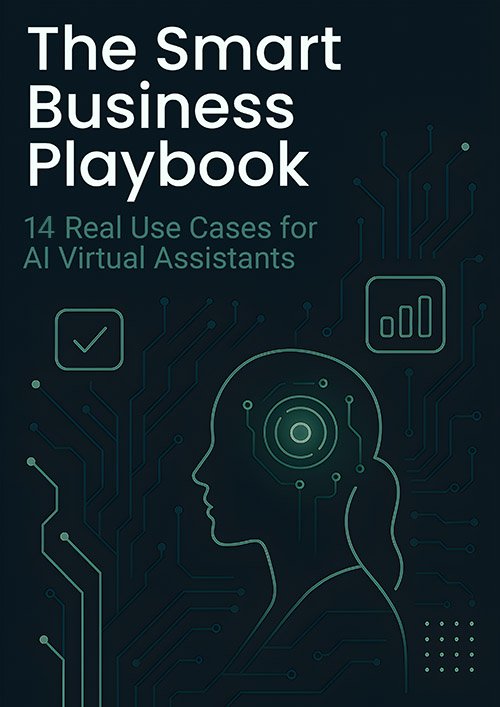As an HR software consultant, you assess technology needs by evaluating current systems against business goals, identifying gaps, and analyzing integration challenges. You propose system improvements by recommending enhancements, aligning digital strategies, and developing implementation plans. You implement HR software solutions with customization, data migration, and integration plans, ensuring data security. To support HR personnel, you create training programs, utilize software tools, and promote continuous skill development. Managing vendor relations and ensuring legal compliance are essential tasks, involving vendor evaluation, contract negotiation, and compliance audits. Exploring the intricacies of these responsibilities will reveal how they drive organizational success.
Key Takeaways
- An HR software consultant evaluates current HR systems to identify inefficiencies and technology gaps.
- They recommend system improvements aligned with organizational goals and digital transformation strategies.
- Consultants customize HR software solutions to enhance user experience and meet organizational needs.
- They conduct training programs for HR personnel to ensure effective use of new software solutions.
- HR software consultants ensure legal compliance by staying updated on employment laws and conducting audits.
Assessing HR Technology Needs

How effectively are your current HR systems meeting organizational demands? Conducting an HR needs assessment is vital to identify gaps between your organization's requirements and existing HR systems.
Begin by evaluating your current processes and tools to pinpoint inefficiencies. Distinguish between needs and wants to prioritize essential improvements.
Analyze business requirements to guarantee technology alignment with HR and payroll functions. Document existing practices across HR, finance, payroll, and IT to establish a baseline for evaluation.
Assess integration challenges that may arise with new technology to avoid disruptions. HR Technology Advisors assist organizations in implementing relevant HR technology tools to ensure smooth transitions and enhance efficiency.
Understanding your strategic and operational needs helps in identifying gaps and readiness for change.
Ultimately, aligning technology with organizational goals guarantees streamlined operations and enhances employee satisfaction.
Proposing System Improvements
To propose system improvements effectively, you must first assess your current HR infrastructure to understand its capabilities and limitations. Identify any technology gaps that hinder achieving organizational objectives and align with strategic plans. Based on this analysis, recommend targeted enhancement solutions that optimize HR processes and support the organization's growth and efficiency goals. By conducting assessments of current digital practices, you can ensure that the proposed improvements are aligned with the overall digital transformation strategy. This can lead to better data-driven insights that enhance decision-making processes throughout the organization.
Assess Current Infrastructure
While evaluating your current HR infrastructure, it's vital to conduct an extensive review that scrutinizes existing systems and practices, pinpointing areas that demand special attention.
This infrastructure evaluation should assess network performance, security measures, and capacity issues. Examine software versions, update statuses, and identify any user-related or network-related issues that might impede system performance.
Review your current service provider selection, server room layout, and backup policies to guarantee they meet organizational needs. It's essential to analyze the total cost of ownership for your systems to make informed decisions about future investments.
Furthermore, incorporate a thorough Human Capital requirements assessment and analyze existing Finance, Payroll, and IT systems.
Evaluate organizational skill levels and capacity, and gauge your team's change management readiness.
This meticulous approach forms the basis for creating a detailed requirements document and initial Request for Proposal (RFP), guiding future improvements.
Identify Technology Gaps
A thorough identification of technology gaps is essential for proposing effective system improvements. Conducting technology audits enables you to pinpoint inefficiencies in system configuration and utilization. By analyzing business processes, you can identify where optimization is needed. Skills assessments reveal gaps in employee proficiency with software systems, impacting operational efficiency. High job vacancy rates and challenges in finding skilled candidates often signal system deficiencies. Leveraging HR data analytics, you can uncover these skills gaps and address training needs. Additionally, system integration challenges must be examined, as managing multiple HR systems can lead to information gaps and regulatory issues. A process-first approach guarantees technology enablement aligns with business objectives, providing a strategic foundation for improvement. HRchitect provides a comprehensive report with documented improvement opportunities, helping organizations optimize their systems effectively.
Recommend Enhancement Solutions
When recommending enhancement solutions for HR systems, conducting a thorough assessment of current systems is vital to identify inefficiencies and propose tailored improvements. You need to scrutinize existing HR processes to pinpoint areas ripe for HR tool optimization. By analyzing these systems, you can suggest software customization that aligns with the company's strategic objectives. Crafting a detailed proposal involves considering budgetary constraints and operational needs, guaranteeing the solutions are both practical and effective. Develop a strategic plan for implementing new technologies while managing the delivery and configuration of system modules. It's critical to conduct compliance tests to adhere to regulations and provide extensive activity reports. This precise approach guarantees proposed enhancements greatly improve HR functions for long-term success. An HR Business Process Consultant can help ensure that these enhancements are aligned with the organization's overall goals by employing data-driven analytics for actionable insights.
Implementing HR Software Solutions

Implementing HR software solutions begins with a strategic approach that guarantees seamless integration and functionality. First, focus on HR software customization to tailor the system to your organization's needs, enhancing the user experience. It's vital to define the project scope and objectives clearly, establishing a timeline with well-defined milestones. A dedicated implementation team, including HR, IT, and key stakeholders, should be formed to promote cohesive collaboration. The average implementation time for Personio is around six weeks, though this may vary based on organizational needs. Consider these important steps:
- Set a realistic budget covering software acquisition, training, and ongoing support.
- Plan data migration meticulously, ensuring accuracy and integrity.
- Develop and deliver tailored training materials for different employee groups.
- Conduct thorough testing and plan a gradual rollout.
- Establish feedback mechanisms to refine and improve the system continually. By leveraging expert guidance, organizations can ensure that their HR software implementation aligns with best practices and industry standards.
Managing System Integration
To effectively manage system integration, assess system compatibility to secure seamless data flow between new and existing HR systems. Start by identifying integration challenges like data discrepancies and security issues. Verify the new system's ability to synchronize employee data with your current HRIS, assuring technical feasibility and evaluating integration complexity. With decades of experience in HR technologies, including Taleo, Oracle, and Workday, consultants offer customizable iPaaS solutions that streamline automation, reducing data errors and simplifying adoption. Additionally, leveraging comprehensive HR suite features can enhance the integration process and improve overall system functionality. Next, develop a detailed integration plan, outlining specific milestones and timelines to guide data migration. Collaborate closely with IT to guarantee the technical integration progresses smoothly. Pre-built integrations or APIs can simplify the process, while custom solutions cater to unique needs. Finally, prioritize robust data security measures and clear governance to maintain accuracy and consistency.
Training HR Personnel

To effectively train HR personnel, you need to develop structured training programs that leverage a mix of traditional and modern learning methods. Conducting workshops and sessions can enhance understanding by providing interactive and real-time feedback opportunities. Utilize specialized HR training software to streamline course creation and guarantee thorough coverage of essential topics. Incorporating a Learning Management System (LMS) can simplify and accelerate HR training, ensuring quality and efficiency in delivering courses.
Developing Training Programs
When devising effective training programs for HR personnel, a meticulous approach is essential to guarantee that each component aligns with organizational goals and enhances skill sets. Start with a thorough needs assessment to identify gaps using training methodologies and skill assessments. Establish clear objectives ensuring they sync with strategic goals. Design content tailored to specific HR competencies, and prepare materials like manuals and videos. Incorporate robust evaluation methods to measure the program's effectiveness. With the growing demand for HR consultants in various industries, it's crucial to ensure that training programs are comprehensive and up-to-date, addressing both current and emerging challenges in HR management.
- Identify training needs via performance evaluations
- Set objectives aligned with strategic goals
- Design content for targeted HR skills
- Create extensive training materials
- Implement evaluation methods for effectiveness
Conducting Workshops and Sessions
Someone might wonder how effective workshops and sessions can transform HR personnel into strategic assets. Utilizing evidence-based, road-tested methodologies, these workshops drive strategic thinking and planning. With a duration of 3 to 5 days, the sessions are designed for 8-10 participants to foster workshop engagement and avoid analysis paralysis. Expert facilitators employ strategic facilitation to guide HR personnel through critical project decisions, HR audits, gap analysis, and strategic HR planning. These sessions markedly enhance participant skills in training and development planning, change management, and legal compliance. Feedback consistently indicates considerable progress and positive outcomes. Participants in these workshops gain insights into real-world case studies and practical examples, significantly enhancing their consulting skills.
Safeguarding HR Data
In the digital age, safeguarding HR data is vital to maintaining both privacy and compliance. As an HR software consultant, you play an important role in enhancing data security and risk management. Start by encrypting data both at rest and in transit to shield it from unauthorized access. Implement access control measures, restricting sensitive information based on roles. Regular audits guarantee systems remain secure and comply with the latest standards. Adopt data minimization practices to decrease breach impacts. Safely dispose of outdated data to eliminate unnecessary risks. Regular training on recognizing phishing tactics is essential to prevent social engineering attacks on HR systems.
- Encrypt and protect HR data at all stages.
- Regularly audit and update security protocols.
- Limit data collection to essential information.
- Enforce strict access controls based on roles.
- Implement secure data disposal methods.
Handling Vendor Relations

Establishing robust vendor relations is vital for an HR software consultant to guarantee seamless integration and long-term success. You must develop thorough vendor evaluation criteria, analyzing vendors' track records, financial stability, and regional presence to ascertain alignment with your organization's needs. Assess their consulting expertise across selection, design, and implementation stages, confirming the vendor can provide sandbox environments for testing. When it comes to contract negotiation strategies, focus on obtaining detailed pricing information and evaluating the value each vendor offers. Consider their customization options and support team responsiveness. It's important to verify that the solutions meet both current and future organizational requirements and to evaluate any potential acquisitions that could affect vendor relationships. This methodical approach secures ideal vendor partnerships. Change Associates offers assistance in vendor selection and implementation, ensuring that your company makes informed decisions for successful long-term relationships with HRIS vendors.
Ensuring Legal Compliance
To guarantee legal compliance, you must stay vigilant and proactive in monitoring ongoing legal and regulatory changes affecting your organization. Continuous legal updates are essential. Regularly review and update your HR statutory compliance lists and understand the implications of legislative changes. It's important to stay informed about wage and hour laws, anti-discrimination policies, and data protection regulations. Compliance audits play a significant role in evaluating potential gaps from new or amended laws.
Effective HR compliance involves adhering to labor laws, regulations, and internal policies, which creates a safe, fair, and equitable work environment for employees.
Here's what you should do:
- Stay updated on employment laws and regulations.
- Analyze the impact of legislative changes on your organization.
- Conduct compliance audits regularly.
- Review and update HR statutory compliance lists.
- Identify compliance gaps and address them promptly.
These steps guarantee your organization meets all legal requirements effectively.
Strategic HR Project Management

While guaranteeing legal compliance is fundamental for HR operations, managing strategic projects demands a different skill set focused on achieving organizational goals through clear, actionable objectives.
You must define project objectives that align with these goals, guaranteeing they're measurable and achievable. Effective communication and stakeholder engagement are essential in maintaining project scope and deliverables.
Strategic planning is crucial to navigate unexpected challenges, and adaptable project plans are important for success. HR software consultants often collaborate with organizations to align company practices with federal and regional regulations, ensuring compliance and efficiency.
Strong project management skills, including resource allocation and team management, guarantee efficient execution.
Utilize effective tools for ideal resource allocation and continuous learning to refine processes. HR systems enhance workflows by improving processes and managing vendor relations.
Embracing change management plans facilitates smooth implementation and successful integration into daily operations.
Conclusion
As an HR software consultant, you play a pivotal role in optimizing HR processes. Notably, 70% of companies report improved efficiency after implementing tailored HR solutions. This underscores the importance of your expertise in evaluating technology needs and managing integrations. By effectively training personnel and safeguarding data, you guarantee smooth changes and secure systems. Your strategic project management and vendor relations skills not only enhance HR operations but also guarantee compliance with evolving legal standards, driving organizational success.


